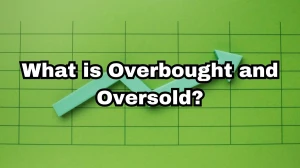
I Bond Rates of U.S - November 2023
In November 2023, the U.S. Treasury raised Series I savings bond rates to 5.27%, making them an attractive choice for inflation-protected investments.
by Sai V
Updated Nov 09, 2023
On This Page
I Bond Rates November 2023
In November 2023, the U.S. Department of the Treasury announced an increase in the interest rates for Series I savings bonds, making them an attractive option for investors seeking a safe, long-term hedge against rising prices. The new rate for I bonds issued between November 2023 and April 2024 stands at 5.27%, a significant jump from the previous annualized rate of 4.30%.
These bonds, designed to protect savers from inflation, have their rates recalculated every six months based on recent economic trends. What makes this rate particularly appealing is the fixed rate, which, at 1.3%, has remained above 1% for the first time since before the Great Recession. Investors can lock in this fixed rate for up to 30 years, providing a stable and secure investment option amid changing market conditions.
How to Buy I Bonds in November 2023?
In November 2023, acquiring I Bonds is a straightforward process, involving a choice between paper and electronic bonds, deciding the investment amount, considering the holding period, and following specific purchase methods, as outlined in the following steps.
Choose the Type of I Bonds
In November 2023, opt for either paper or electronic I bonds. Paper bonds require mailing via federal tax return, while electronic bonds can be conveniently purchased online through TreasuryDirect.
Determine the Investment Amount
Decide on the investment amount for your I bonds. Paper bonds have a $50 minimum and $5,000 maximum per year, with various increments. Electronic bonds allow purchases from $25 to $10,000 annually.
Consider the Holding Period
Take note of the holding period. Selling before 12 months yields no interest. Selling before five years may result in a loss of the last three months' interest. Hold for five years or more to avoid interest loss; I bonds can earn interest for up to 30 years.
Purchase I Bonds
For electronic I bonds, create a TreasuryDirect account online and follow the instructions to complete the purchase. For paper bonds, accurately fill out the required forms and mail them with payment when filing your federal income tax return.
What Are I Bonds?
I bonds, also known as Series I savings bonds, are a type of U.S. Treasury bond that earns interest based on a combination of a fixed rate and a variable semiannual inflation rate tied to the Consumer Price Index for All Urban Consumers (CPI-U). The fixed rate remains constant, while the inflation rate adjusts to offset changes in inflation, providing a way to protect the bondholder's purchasing power.
The combination of these rates determines the bond's composite rate, which currently stands at 5.27% until April 30, 2024. To cash in an I bond, investors must hold it for at least one year, and there are interest rate penalties for cashing in before five years, encouraging long-term investment.
Stay ahead in the fast-paced world of financial Markets with Marketshost's expertise and market-focused resources.
What Advantages Do I Bonds Offer?
I Bonds offer essential advantages, including inflation protection, government backing, tax benefits, and suitability for conservative investors, making them a valuable addition to investment portfolios.
- I Bonds safeguard savings from inflation, preserving purchasing power.
- Backed by the U.S. government, ensuring investment safety.
- Interest payments are tax-free, making them a tax-efficient investment.
- Can be used to fund college education, offering a tax-advantaged option.
- Attractive for stability and security in investment portfolios.
What is the Taxation Process for I Bonds?
The taxation process for I Bonds involves exemption from state and municipal taxes but not federal income taxes. Owners can choose to pay federal taxes on the interest annually, upon maturity, or when the bond is cashed. If used for qualified higher education expenses, I Bonds may be completely tax-exempt. State tax liability is limited to estate or inheritance taxes, and regardless of whether the bond was purchased or received as a gift, the owner is responsible for the tax payments on the bond's interest.
When is the Maturity Date for I Bonds?
The maturity date for I Bonds occurs after 30 years from the date of purchase. During this period, I Bonds earn interest, which is a combination of a fixed rate and an inflation rate, ensuring that investors continue to accrue earnings over time.
The 30-year maturity period consists of an initial 20-year term, during which the bond earns a combination of fixed and inflation-adjusted interest, followed by a 10-year extended maturity period where the bond continues to earn interest based on inflation rates. After this 30-year period, the I Bond stops earning interest, making it important for investors to be mindful of the maturity date when managing their investments.
I Bond Rates November 2023 - FAQs
1. What is the current interest rate for I Bonds in November 2023?
The interest rate for I Bonds in November 2023 is 5.27%.
2. How can I buy I Bonds in November 2023?
You can purchase I Bonds in either paper or electronic form, with varying investment amounts and holding periods.
3. What are the advantages of investing in I Bonds?
I Bonds offer inflation protection, government backing, tax benefits, and stability in investment portfolios.
4. What is the taxation process for I Bonds?
I Bonds are exempt from state and municipal taxes but subject to federal income taxes, which can be deferred until redemption or annually.
5. When does the maturity date for I Bonds occur?
The maturity date for I Bonds is after 30 years from the date of purchase, during which they continue to earn interest.




